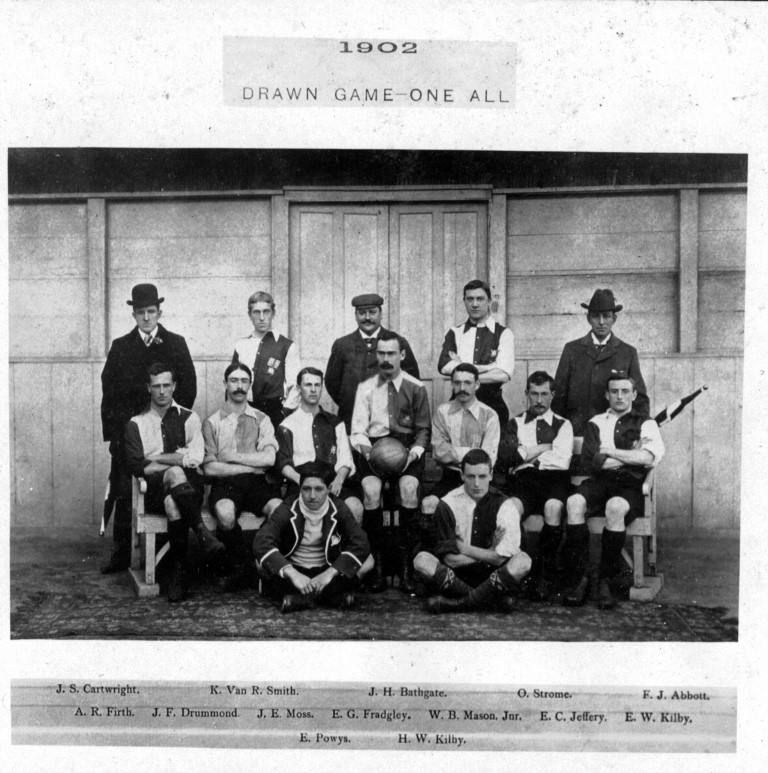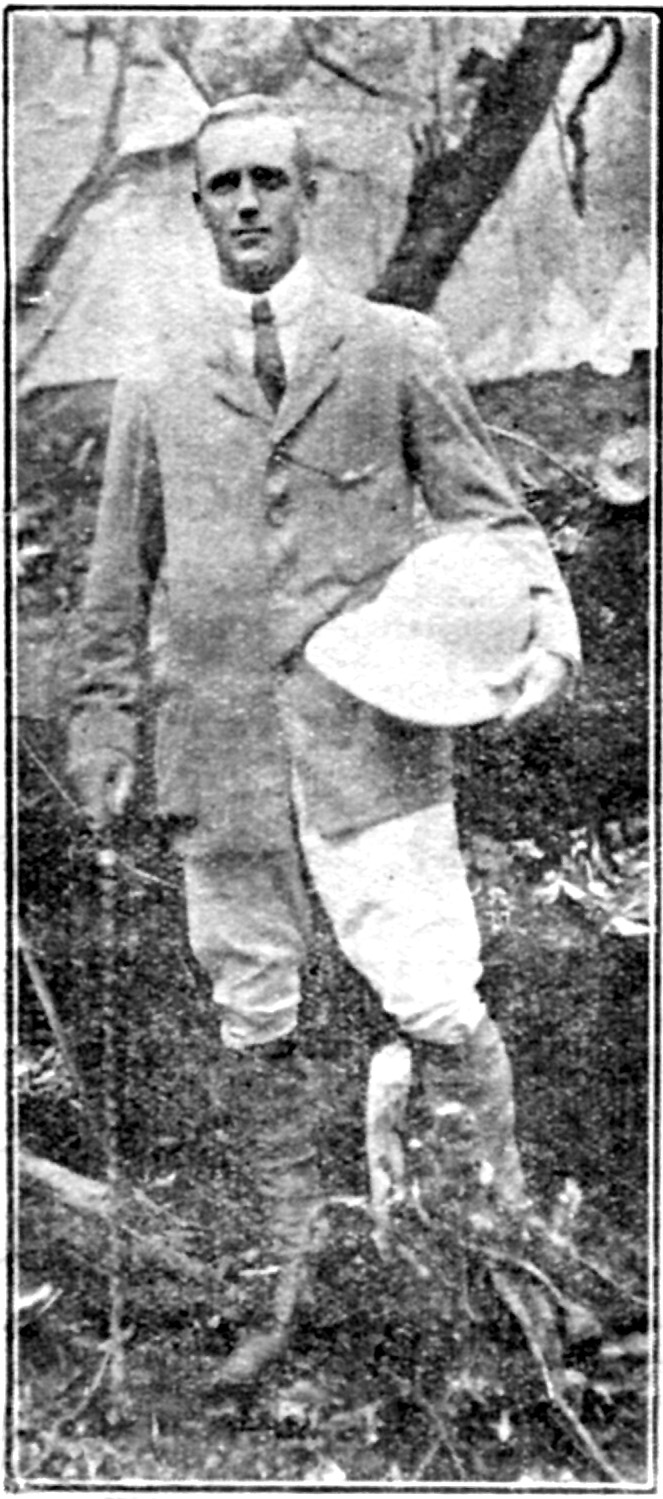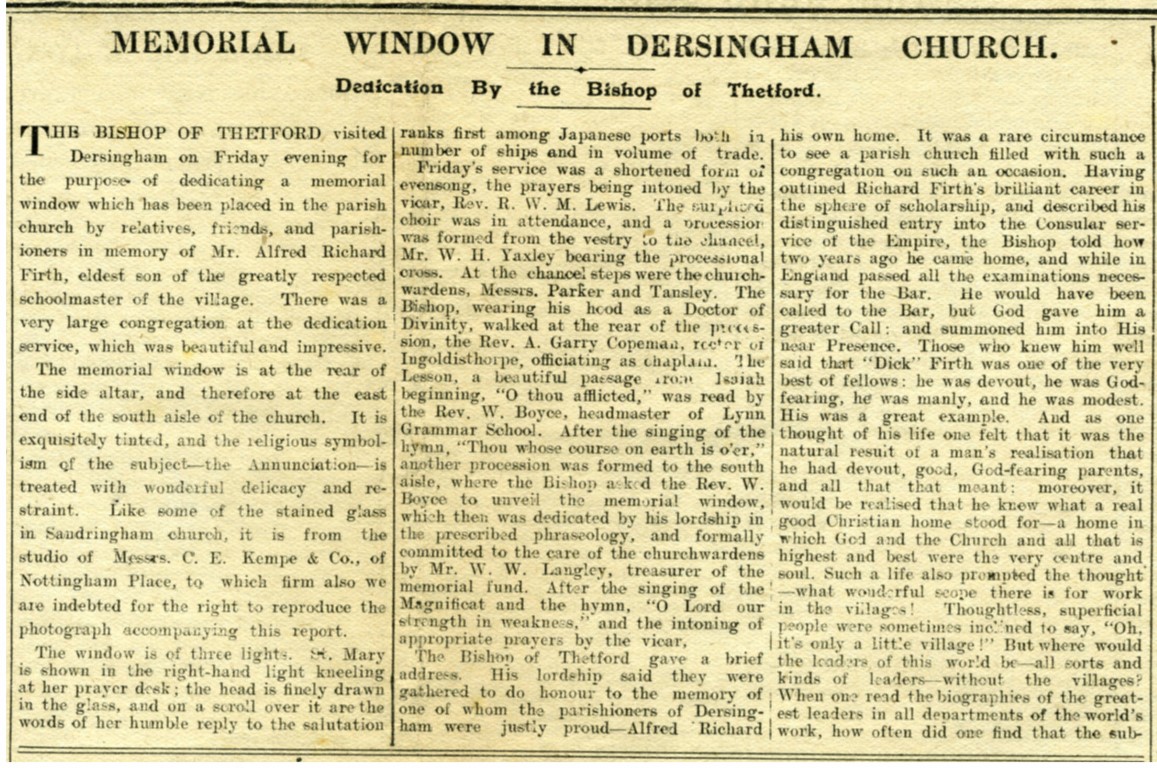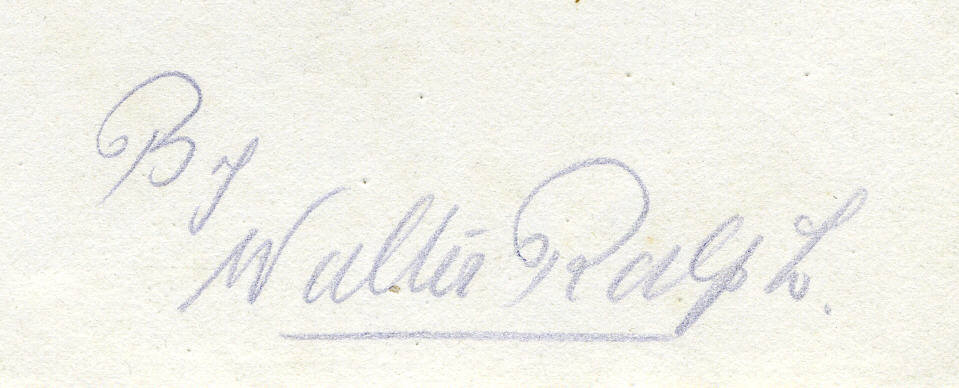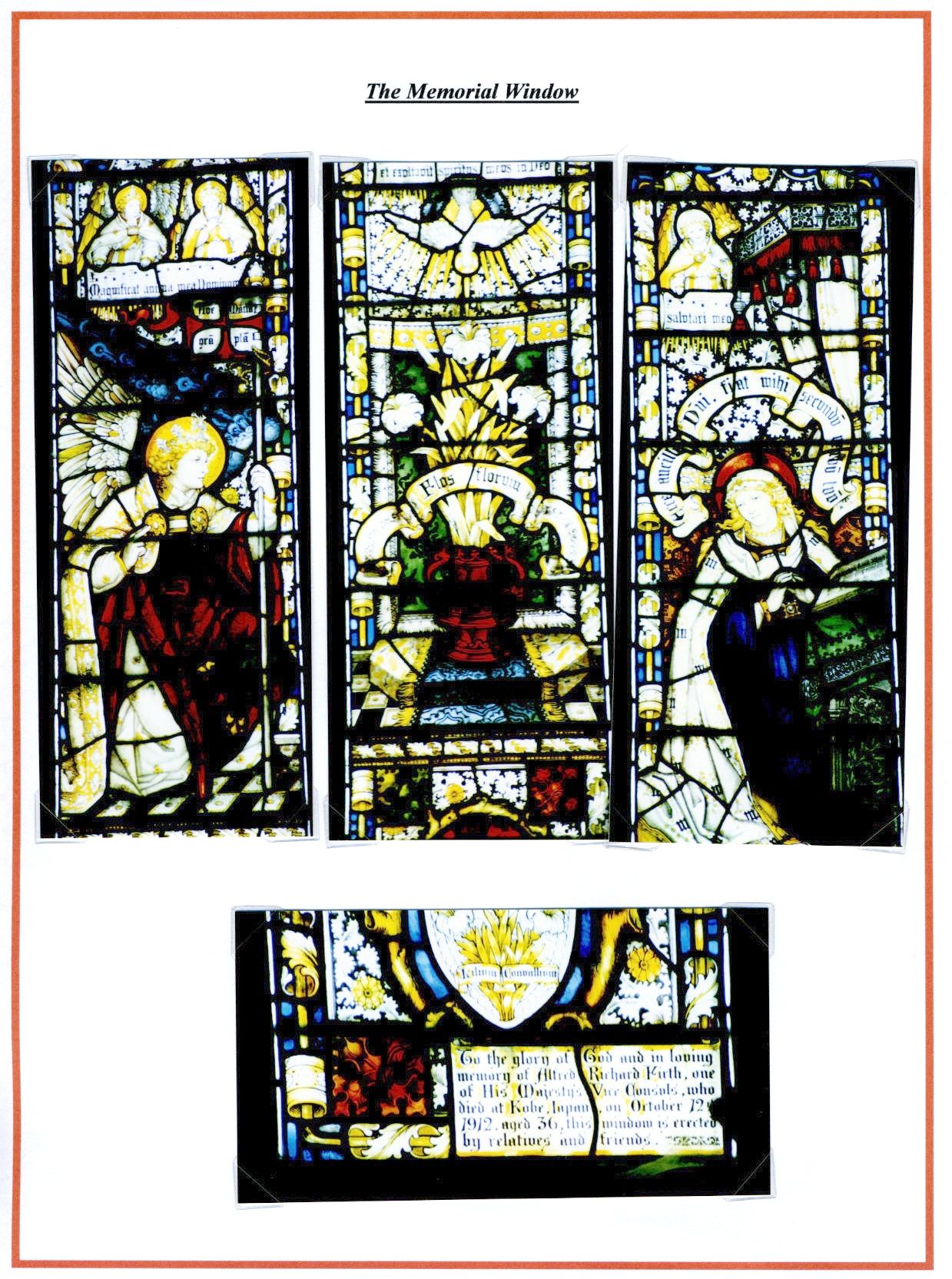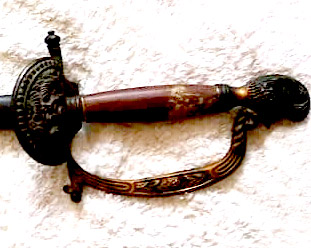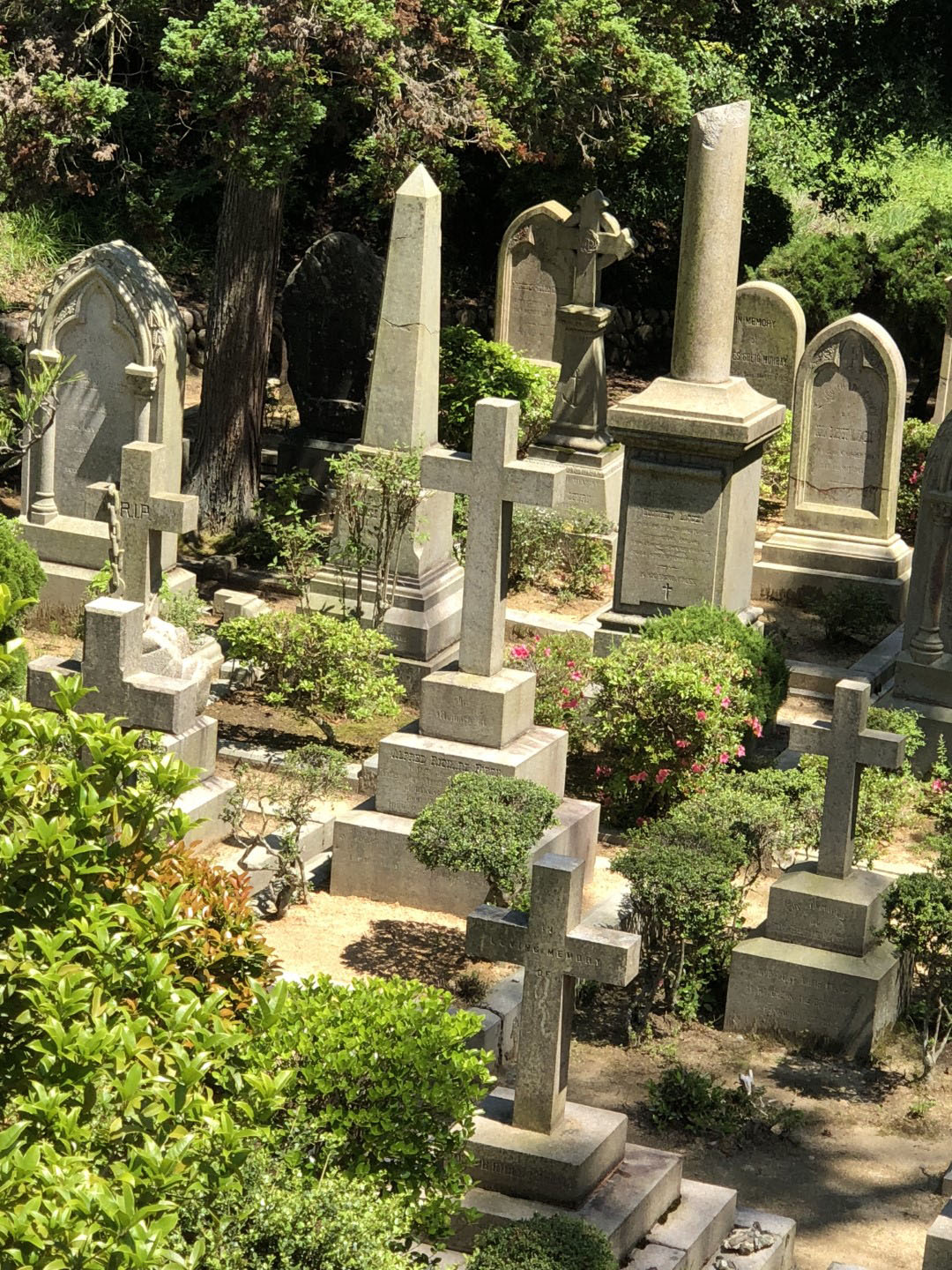Note To enlarge images use the mouse cursor and scroll wheel to adjust magnification or tap on a touch screen at fixed zoom.
In the church at the rear of the side altar at the east end of the south aisle is a memorial window in memory of Alfred Richard Firth the eldest son of Alfred Firth, ”the greatly respected schoolmaster of the village.” The window is of three lights. St. Mary is shown in the right hand light kneeling at her prayer desk. On a scroll over her head are the words of her reply to the salutation of the Archangel, “Behold, the hand maid of the Lord, be it unto me according to thy will.” On the left is St. Gabriel the Archangel carrying a banner on which his words are inscribed. In the centre is a beautiful vase of Madonna Lilies. Above, a representation of the Holy Spirit is shown running through the heads of the three lights. Angels appear holding scrolls upon which are written the opening words of The Magnificat In the base of the lights are shown on shields, “The Tower of David,” “The Fountain,” and “ The Lily” three emblems associated with the Virgin Mary. Above, in the tracery, are shown the figures of angels playing musical instruments. The dedication is in the right hand corner.
To the glory of God and in loving memory of Alfred Richard Firth, one of his Majesty’s Vice-Consuls, who died at Kobe, Japan, on October 12th 1912, aged 36, this window is erected by relatives and friends.




